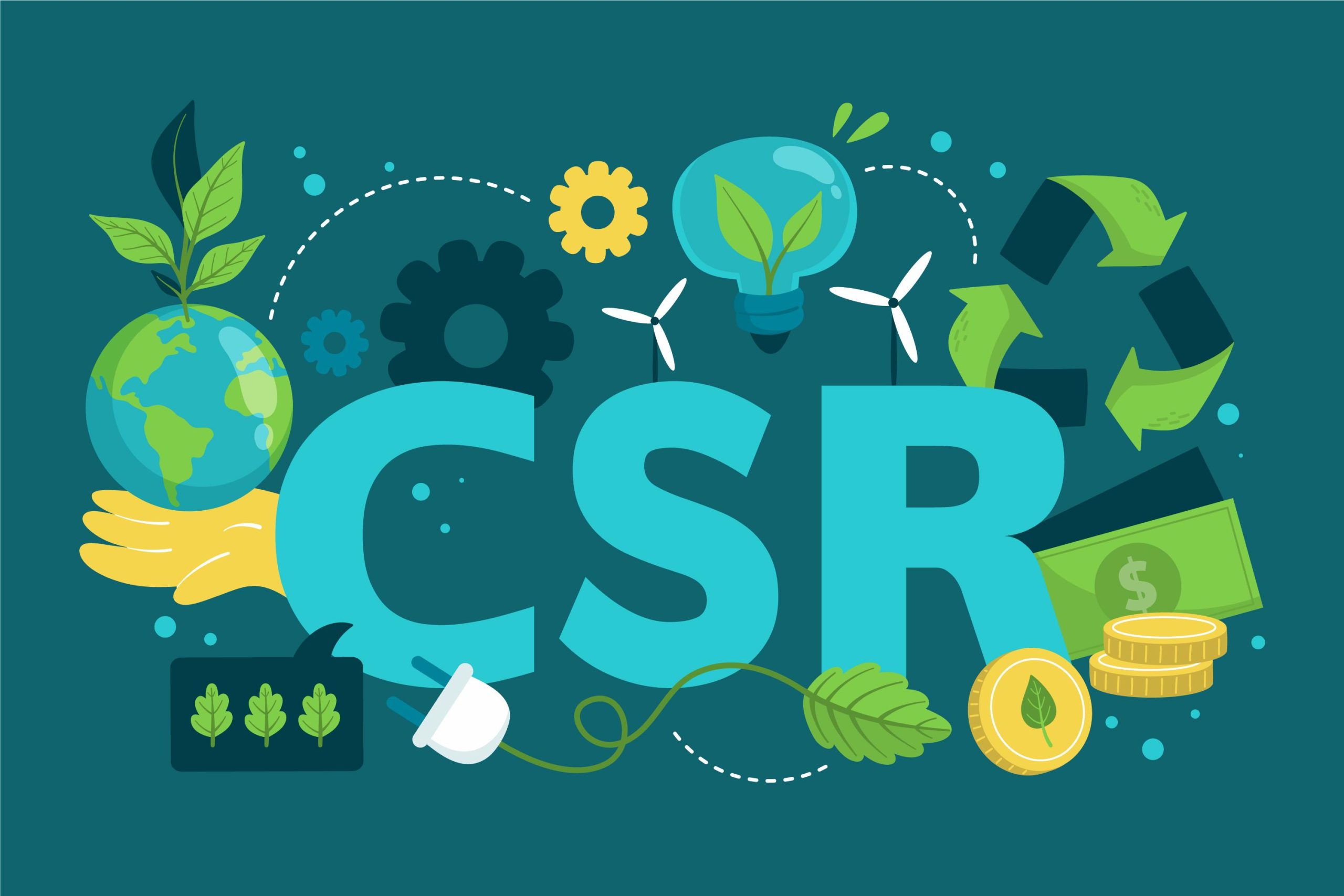The idea of Green Supply Chain Management (GSCM) has emerged as a game-changer for organizations trying to operate sustainably and responsibly in a world confronting unprecedented environmental concerns. GSCM entails incorporating environmentally friendly procedures into every step of the supply chain, from obtaining raw materials to distributing completed goods. The GSCM approach prioritizes environmental issues with economic efficiency, which not only results in a better planet but also increased operational efficiency, lower costs, and a stronger reputation for the business.
Understanding Green Supply Chain Management
The goal of green supply chain management is to minimize supply chain operations’ negative environmental effects while enhancing their positive economic and social effects. This entails streamlining procedures to minimize waste, lower emissions, save resources, and advance moral behavior. The supply chain’s many stages are covered by GSCM, including:
Sustainable Sourcing: Choosing vendors who uphold ethical labor standards, environmentally friendly business practices, and sustainable resource extraction techniques.
Efficient Logistics: Putting in place fuel-efficient transportation routes and utilizing cutting-edge technologies like route optimization and alternative fuels.

Lean Manufacturing: Reducing waste by employing effective production techniques, recycling products, and conserving energy.
Packaging Innovation: Making use of environmentally friendly packaging products and designs that minimize waste, lower carbon emissions, and guarantee secure transit.
Reverse Logistics: Organising product returns, recycling, and correct disposal to increase product lifespan and lessen environmental effects.
Collaborative Partnerships: Close collaboration with vendors, clients, and other stakeholders to enhance sustainability practices throughout the supply chain.
Benefits of Green Supply Chain Management
Beyond environmental stewardship, implementing green supply chain management practices has a wide range of advantages:
Cost Savings: Process streamlining and waste elimination frequently result in significant cost savings. Businesses can reduce costs for raw materials, energy bills, and trash disposal by optimizing energy use and resource usage.
Enhanced Reputation: Brands that care about the environment are attracting more and more customers. A firm’s reputation can be improved by a dedication to sustainable practices, which will draw in environmentally aware customers and increase brand loyalty.
Regulatory Compliance: Businesses that use GSCM are better prepared to overcome compliance problems and avoid fines as environmental requirements become more stringent.
Innovation and Efficiency: Innovation frequently results from the search for sustainable solutions. Businesses are urged to create novel technologies, components, and procedures that simultaneously increase productivity and sustainability.

Resilience and Risk Management: GSCM may increase a company’s resilience by assuring ongoing operations even in the face of disruptions and implementing practices that reduce environmental risks.
Long-Term Viability: By aligning with shifting social norms, companies who adopt GSCM position themselves for long-term success as the global society grows more aware of environmental challenges.
Also Read: ESG Explained: Decoding the Meaning and Relevance of Environmental Social Governance
Challenges and Overcoming Barriers
Even though the advantages are obvious, putting green supply chain management into practice can be difficult. Typical challenges include:
Initial Costs: Making the switch to eco-friendly practices may need an initial outlay for new equipment and training. However, long-term savings and advantages frequently outweigh these expenses.
Lack of Awareness: Some companies might not be aware of how their supply chain operations affect the environment. To promote change, education, and awareness-raising are essential.
Complexity: Due to the numerous partners, procedures, and locations involved, supply chains can be complicated. It might be difficult to coordinate efforts and ensure buy-in from all parties.
Real-world implementation: Apple’s Green Supply Chain Management
With its emphasis on recycling, use of renewable energy, and ethical sourcing of materials, Apple is a standout example of how Green Supply Chain Management may be implemented. The utilization of recovered aluminum and the company’s attempts to reduce the effects of mining on the environment demonstrates its dedication to sustainable business practices. Apple’s focus on effective logistics, lean manufacturing, and environmentally friendly packaging exemplifies a holistic strategy to lower waste and energy usage. Furthermore, the company’s efforts to reduce its carbon footprint and advance a cleaner supply chain are demonstrated through its recycling programs, circular economy initiatives, and commitment to renewable energy.
To lessen their environmental impact and run more sustainably, numerous businesses across numerous industries have adopted green supply chain management techniques. A few well-known businesses that have attempted to include sustainability in their supply chain operations are listed below:
Other Examples of Green Supply Chain Implementation
IKEA: The furniture retailer places a strong emphasis on environmentally friendly packaging, energy-efficient manufacturing, and sustainable material sourcing. They also provide services for recycling used furniture.
Toyota: The organization reduces waste and energy consumption in its manufacturing processes and is well-known for its “Toyota Production System.” Toyota also creates electric and hybrid automobiles that support its environmental goals.
Nestlé: Nestlé has a thorough sustainability policy that involves sourcing ingredients responsibly, cutting back on packaging waste, and using as little water as possible across its supply chain.
Walmart: Walmart pledges to lessen its carbon impact and promote environmentally friendly practices throughout its supply chain. To cut emissions and boost productivity, they collaborate with suppliers.
Coca-Cola: The corporation has set objectives to cut back on carbon emissions and water use throughout its supply chain. They also emphasize recycling and packaging that is environmentally friendly.

Ford: Ford is making investments in environmentally friendly materials for its automobiles and attempting to lower emissions from its production procedures. The development of electric vehicles is another area of emphasis.
Dell: Dell places a strong emphasis on environmentally friendly packaging, ethical electronic recycling, and energy-saving production techniques.
Adidas: The sportswear manufacturer is aiming to source materials sustainably, cut back on water use, and boost energy effectiveness in its supply chain activities.
These instances demonstrate the broad spectrum of businesses and industries that have adopted green supply chain management to harmonize their operations with environmental sustainability. It’s important to remember that these programs are ongoing, and businesses are constantly striving to enhance their sustainability programs and have a good impact on the environment.
Taking the first step towards implementing Green Supply Chain
It takes careful planning, dedication, and a well-thought-out strategy to manage your business. Here is a step-by-step instruction sheet to get you going:
Evaluate Current Practices:
Make a thorough analysis of the present supply chain procedures at your organization. Determine how to reduce your influence on the environment in areas including trash production, energy use, and raw material procurement.
Establish Specific Goals:
For your green supply chain initiative, establish precise, measurable, attainable, pertinent, and time-bound (SMART) objectives. Decide which environmental metrics, such as cutting carbon emissions, decreasing waste, or utilizing sustainable materials, you wish to improve.
Obtain management approval:
Obtain the support of key decision-makers and upper management. Promote the advantages of putting into place green supply chain practices, such as potential cost savings, increased reputation, and regulatory compliance.
Create a Green Team:
Create a cross-functional team with representatives from the procurement, manufacturing, logistics, and sustainability divisions. The green supply chain strategy will be developed and carried out by this team.
Perform a supplier evaluation:
Analyze the sustainable practices of your suppliers. Think about things like their dedication to responsible sourcing, ethical labor practices, and environmental certifications. Establish criteria for choosing and working with vendors who support your environmental objectives.

Create a green supply chain strategy:
Create a detailed strategy that explains how your business will incorporate sustainable practices into each stage of the supply chain. Consider topics like product management for the end of its life, sourcing, production, logistics, and packaging.
Implementing sustainable sourcing is step seven:
Work with vendors who value sustainability. Think about using recycled or renewable materials, purchasing goods from eco-friendly sources, and advocating for fair labor practices.
Improve Manufacturing Processes:
Utilise energy-efficient manufacturing techniques, such as the use of cutting-edge technology, the optimization of production schedules, and the reduction of waste utilizing lean manufacturing concepts.
Redesign Packaging:
To minimize waste and the environment’s impact, reconsider the materials used in packaging. Utilize eco-friendly materials, scale back on packing, and promote recyclable or reusable packaging choices.
Improve Logistics Efficiency:
Reduce energy use and carbon emissions by choosing the best transportation routes, modes, and strategies. Investigate collaborations with logistics companies that provide sustainable transportation options.
Increase Internal Sensitivity:
Inform staff members of the value of eco-friendly supply chain practices and their part in the project. Encourage staff to give ideas and take part in eco-friendly projects to promote a sustainable culture.
Track and Evaluate Progress:
To gauge the success of your green supply chain project, establish key performance indicators (KPIs). Keep tabs on your development in achieving your sustainability objectives.
Partner up:
Include stakeholders, vendors, and clients in your sustainability journey. Work together to share ideas, innovations, and best practices that support a more sustainable supply chain environment.
Continuous Improvement:
The management of a green supply chain is a continual process. Review your plans frequently and make adjustments to keep up with emerging technologies, market trends, and legal requirements. Update your ambitions and goals regularly based on your success and any new difficulties.
Communicate Your Progress:
Inform all relevant parties, including clients, investors, and the general public, about your green supply chain activities and successes. Sharing your dedication to sustainability might improve the perception of your company.
By following these actions, your business may significantly advance the integration of Green Supply Chain Management practices, contribute to a more sustainable future, and enjoy the rewards that go along with it.
Take Away
Embracing Green Supply Chain Management is a crucial step for businesses looking to combine operational excellence with environmental sustainability. Also, businesses can start a transformational journey by carefully evaluating present procedures, establishing precise goals, and gaining management support. A business can comprehensively lessen its ecological footprint, improve its reputation, and generate cost savings through sustainable sourcing, optimized manufacturing, effective logistics, and cooperative relationships. Therefore, green supply chain practices are kept at the center of the business’ operations thanks to ongoing monitoring, engagement with stakeholders, and a dedication to continuous improvement. This helps to foster a robust, environmentally conscious business ecosystem that is good for both the organization and the environment.
Ready to transform your business into an eco-conscious trailblazer? Explore the power of Green Supply Chain Management with SalesGush. Discover innovative strategies to reduce your environmental footprint, cut costs, and enhance your brand reputation.
Also Read: Simplify your Business Document Processing with SAP AI Business Services




